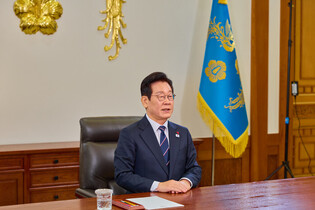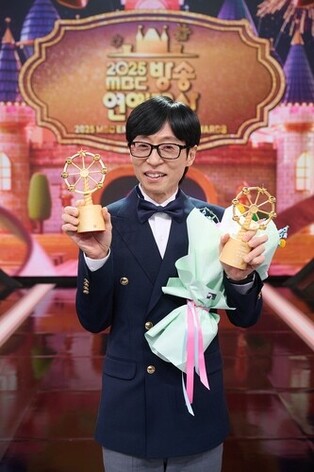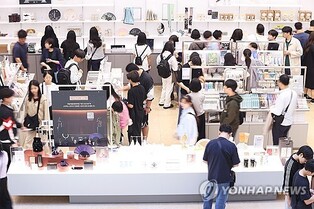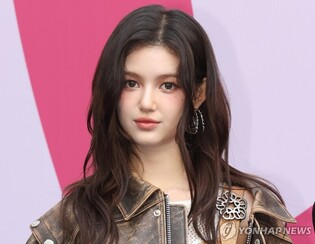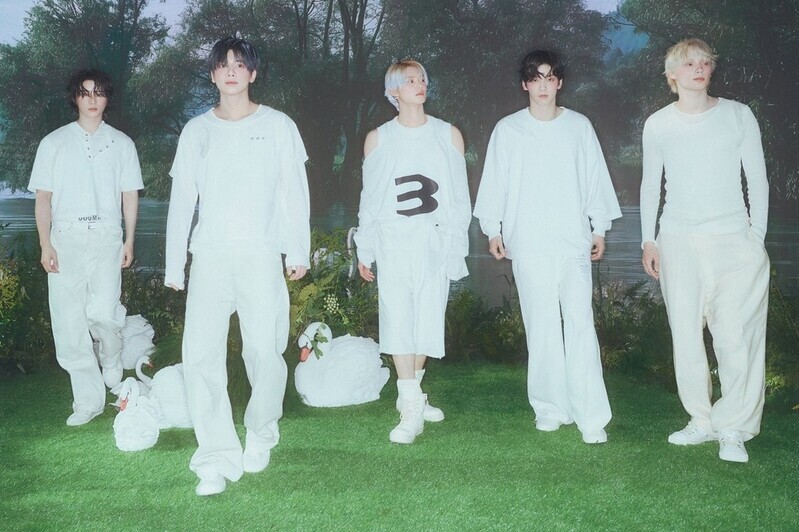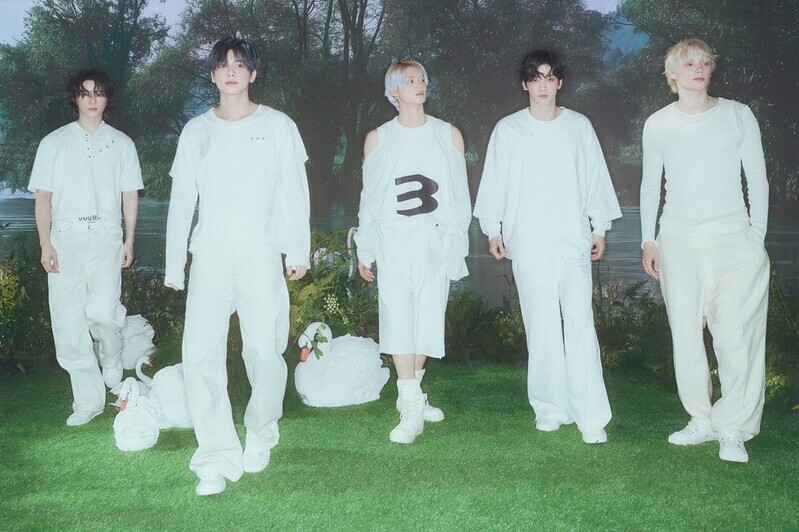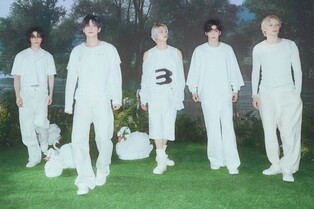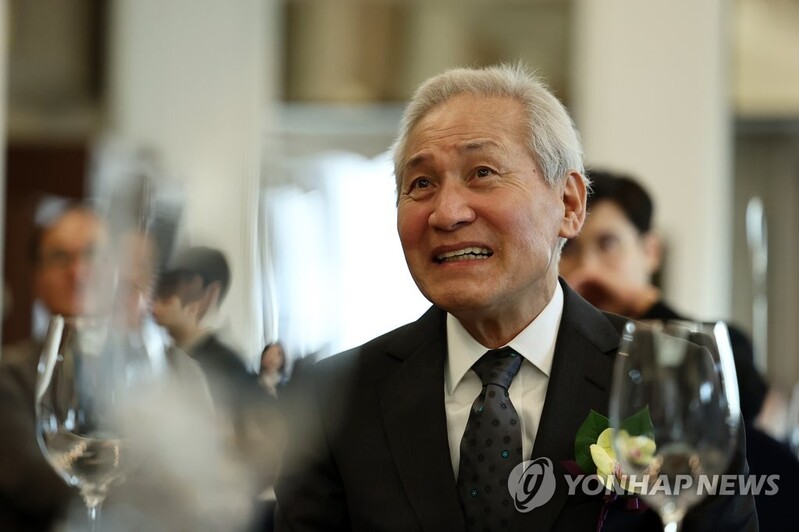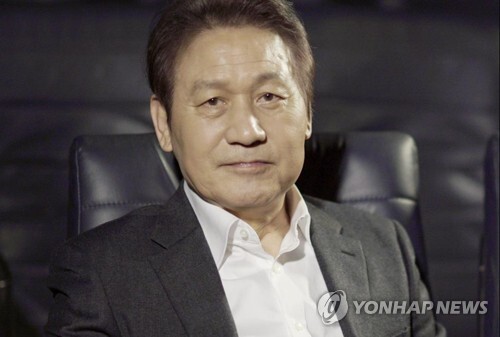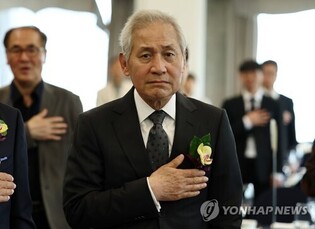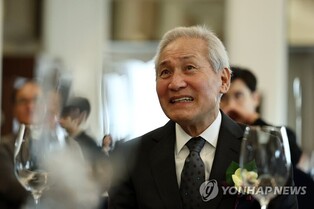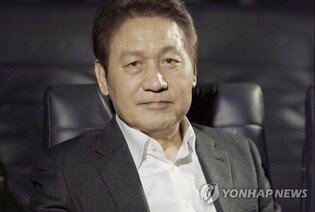*Editor’s note: K-VIBE invites experts from various K-culture sectors to share their extraordinary discovery about the Korean culture.
Scrutinizing AI: AI Art and Changes in University Education (Part 1)
Contributed by Lee Eun-jun (professor at Kyungil University)
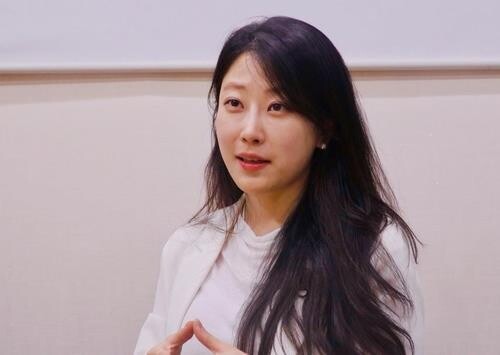 |
Every March, the new semester begins at schools. The new semester of 2025 has started. The atmosphere is quite different from last year.
In departments like Fine Arts, Design, and Film Studies, artificial intelligence courses have significantly increased. Just a few years ago, traditional methods of painting, sculpture, and filmmaking were at the core of education, but now, AI-based creation has become the new standard even in university classrooms.
Is this change a positive one?
Both professors and students have their own perspectives, but one thing is certain: AI art is shaking up university art education completely.
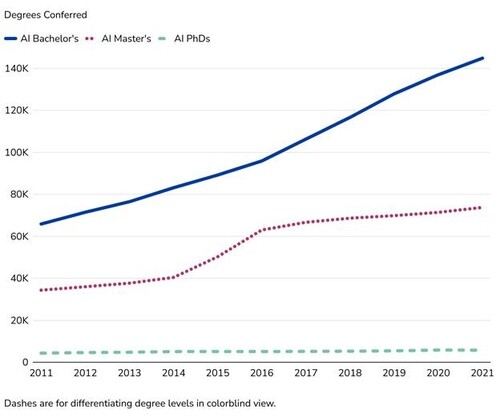 |
| ▲ Graph showing the increase in AI degree awards at U.S. universities over time, captured from 'CSET analysis of IPEDS data' website. (PHOTO NOT FOR SALE) (Yonhap) |
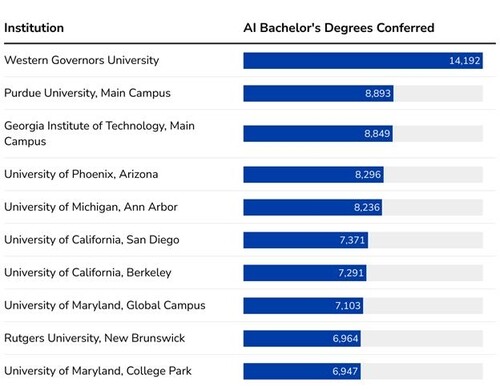 |
| ▲ Top 10 U.S. universities awarding AI-related bachelor's degrees from 2015-2021, captured from 'CSET analysis of IPEDS data' website. (PHOTO NOT FOR SALE) (Yonhap) |
◇ An Era Where an Art Degree Without AI is Impossible
I am reminded of a professor who has been a long-time acquaintance of mine. This individual has kept a distance from AI art for a long time.
This is because they value the analog sensitivity of drawing by hand.
On the other hand, I, as a teacher and artist who researches and creates digital art, am closely watching the combination of AI and art. In this time of historical transition, I am experimenting with AI-based creation and conducting AI classes with students.
AI can be interpreted differently by each individual. For some, it is seen as a threatening presence, while for others, it is a tool that expands creativity.
Some may view it as a technology unrelated to their art.
However, beyond individual professors’ views, on a university level, the introduction of AI curriculum is essential. Famous art universities both overseas and in Korea include AI-based courses in order to maintain competitiveness and keep up with the expanding use of AI in art education.
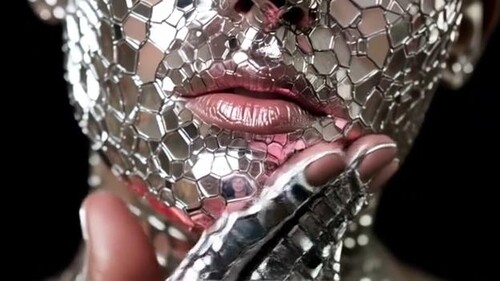 |
| ▲ Pika Labs' Image to video result, captured from Pika Labs website. (PHOTO NOT FOR SALE) (Yonhap) |
◇ Universities Leading AI Art
Top art universities around the world are quickly adopting AI-based education. At Pratt Institute in New York, AI Design courses have been expanded.
The Rhode Island School of Design (RISD) has launched experimental studio classes where new AI tools are experimented with, and machine learning researchers and digital artists are interviewed to discuss ethical issues.
MIT Media Lab has been conducting art projects utilizing AI, and Stanford University has created a course called "AI Art and Aesthetics," which involves theoretical and discussion-based classes on the use and impact of AI in contemporary art. In addition, they have also launched practical classes in AI and aesthetics, where students use AI tools and algorithms creatively and critically to develop artworks.
The trend is the same domestically.
At the arts department I belong to, many AI-based theory and hands-on art production courses, such as "AI Content Production Project" and "AI Visual Production Studio," have been introduced. In this way, AI art is no longer an option but has become a necessity.
(C) Yonhap News Agency. All Rights Reserved

















